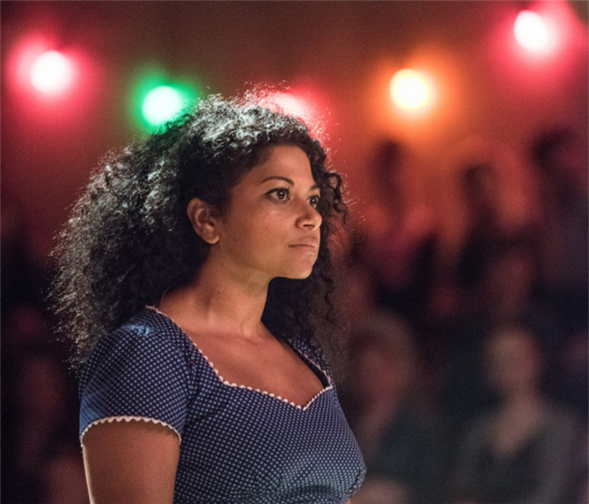Translate Page

How choreographer John Heginbotham helped revitalize the Rodgers and Hammerstein masterpiece
---
Guggenheim Fellow John Heginbotham has been creating his own celebrated contemporary dance-theatre pieces since founding his eponymous company in 2011. Choreographing classic musicals wasn't really high on his wish list -- until boundary-pushing director Daniel Fish invited him to collaborate on a gritty mounting of Richard Rodgers and Oscar Hammerstein's Oklahoma! at Bard SummerScape in 2015. "I had seen Daniel's A (radically condensed and expanded) Supposedly Fun Thing I'll Never Do Again at the Public's Under the Radar festival," Heginbotham says. "I was blown away by his vision, originality, humor and boldness."
Last fall, their unconventional Oklahoma! was such a hit at Brooklyn's St. Ann's Warehouse, it's now transferring to Broadway for a limited run. While, from a narrative standpoint, the turn-of-the-20th-century tale about farm girl Laurey (Rebecca Naomi Jones) wooed by cowboy Curly (Damon Daunno) and farmhand Jud (Patrick Vaill) remains unchanged, the stripped-down, naturalistic staging moves in an unsettling direction, mining dark undercurrents about desire, gender roles and our nation.
That meant Agnes de Mille's iconic choreography had to be completely reimagined (though, just like the recent Broadway revival of Carousel, she still gets a credit in the program). "In the original Oklahoma!, there were dance numbers that were theatrical, not just social dancing," explains Heginbotham. "In our version, the vocabulary is more pedestrian." So the two-step in "Kansas City" and the square-dancing at the box social are still there, but a lot of the other movement is utilitarian: characters pour milk, make cornbread (which is served at intermission) and husk corn, all in time to the music.
While the absence of big production numbers may seem like a grand departure from de Mille, Heginbotham's choices were actually colored by an observation the legendary choreographer made in an interview. "She was asked about the role of stillness in a dance, and she said, 'Stillness is very important, and it is not that nothing is happening -- time is happening,'" Heginbotham recalls. "So we're all watching time happen together. There is a lot of stillness in this show, and I thought it was so articulate and poetic of her."
{Image1}
In addition to coming up with choreography that worked with this new take on the material, Heginbotham had to overcome severe spatial constraints. The show's set resembles a large plywood box, and the narrow stage is flanked by seating on two sides -- not a lot of room to maneuver 11 cast members. Heginbotham decided to create most of the dances collaboratively, tailoring the movement to each performer's part and ability. For example, the actress who plays Ado Annie, Ali Stroker, uses a wheelchair, so she gets to spin on downbeats and perform wheelies, bringing a new sense of moxie to the character.
Choreographically, the centerpiece of Oklahoma! is, as always, the 15-minute dream ballet that opens Act II, in which Laurey (danced by Gabrielle Hamilton) is torn between her two would-be lovers. "Daniel posed this inspiring question: 'What if the dream is not only Laurey's dream, what if it is the production's dream?'" Heginbotham says. "This idea gave us the freedom to explore content that did not directly adhere to the literal narrative. I wanted to find a way to let the dream exist as dreams do, filled with non-sequitur poetry that is designed by the subconscious. I also wanted it to bulge out with sexuality."
Heginbotham's dream ballet feels primitive, lusty and fresh, but there is still some de Mille in there. In fact his favorite part was lifted directly from the original: when Hamilton dismounts an imaginary steed and does a circle slap on her thigh. Another nod to de Mille comes when the ensemble of dancers gallops like a band of wild horses. In 1943, the men were in the saddles; this time it's the women who charge across the stage.
"Thank god for the genius Agnes de Mille and her groundbreaking vision," Heginbotham says, acknowledging he couldn't have done it without her legacy. "It's now given this creative team an opportunity to dream about what the dream ballet can be."
---
Allison Considine is a staff writer at American Theatre magazine. Follow her at @theatric_ally. Follow TDF at @TDFNYC.
Top image: Rebecca Naomi Jones in Oklahoma!. Photos by Teddy Wolff.
TDF Members: Go here to browse our latest discounts for dance, theatre and concerts.